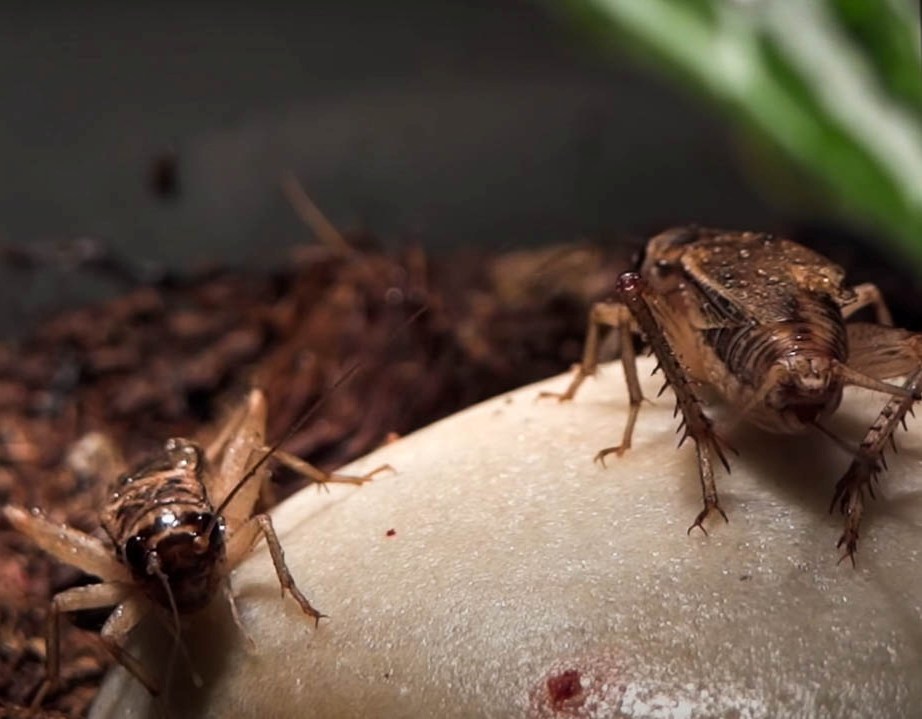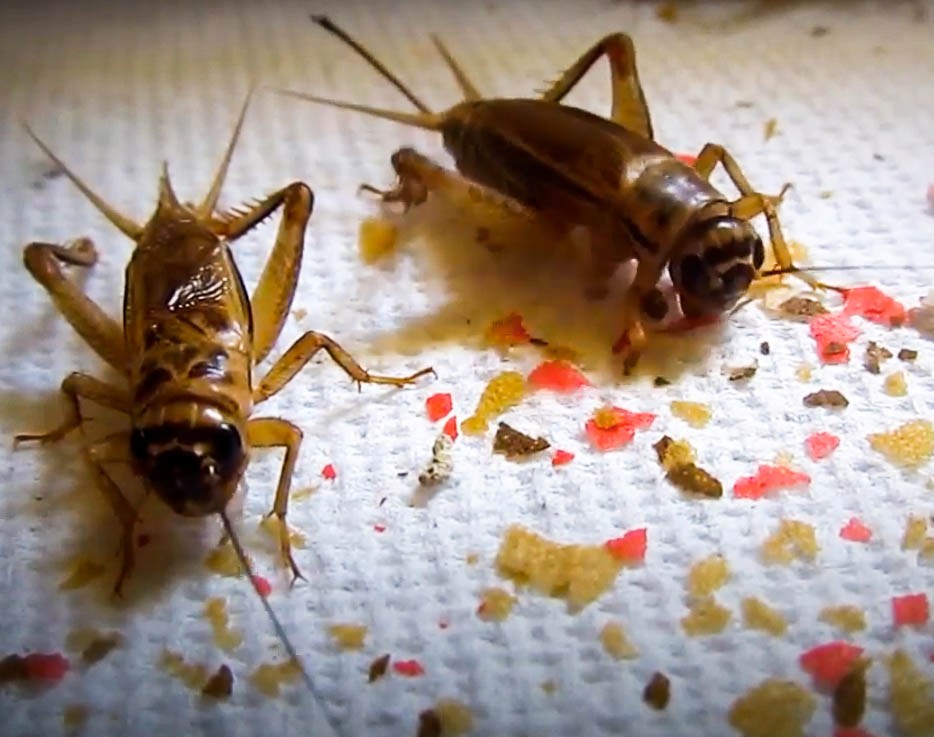About House Crickets
Overview
The house cricket (Acheta domesticus) belongs to the family gryllidae of the order orthoptera, which is under the phylum arthropoda. Between 1950 and 2000, house crickets grew popular as pet food. However, people keep house crickets as pets in some parts of Asia.
Overview
The house cricket is a brownish or gray-colored wingless insect that grows from 16 to 22mm. Like every other insect, the house cricket has six legs, with the hind legs larger than the other four. Male and female house crickets look identical, but the female house cricket has a 12mm long ovipositor sprouting from its rear abdomen. The female's ovipositor is black or brown, with two extra appendages accompanying it. Male house crickets, on the other hand, have more prominent cerci.
House crickets undergo incomplete metamorphosis, and they complete their entire life cycle in about two to three months. Female house crickets lay eggs in any damp substrates she finds, and they mostly remain in areas with temperatures ranging from 26 to 32 degrees Celsius.

House cricket nymphs are smaller versions of the adults. Both the nymph and adult house cricket can survive overwintering as long as they find a constant heat source to sustain them.
Behavior
House crickets are nocturnal insects, which means they spend the entire day hiding in cracks and crevices, and at night, they come out to feed.
House crickets can be annoying when trapped inside with you. They chirp loudly at night, making it nearly impossible for homeowners to sleep. Not only are they loud, but their eating habits are also annoying. Outside your house, house crickets will eat plant and insect matter. However, if they do make it into your home, they will feed on your fruits, plants, fabrics, clothes, and even pet food.
Habitat
House crickets usually seek out warm, moist places to stay. In homes, they gather near heaters, fireplaces, mulch, and woodpiles. They will also move into other parts of your home like your kitchen, basement, attic, and utility room if given the opportunity.
Damages They Cause
House crickets do not cause any major physical harm to your home. Although their loud chirping can lead to restlessness, house crickets do not pose any health risks to humans. They are neither poisonous nor do they carry any disease.

House crickets will go after your clothes and fabrics. Clothes stained with food or sweat attract these annoying bugs, and as they feed, they pull the fibers loose, giving your clothes an unraveled look. House crickets will also stain your clothes, fabrics, and furniture with their fecal matter.
Infestation Signs
The majority of house cricket infestations occur when cricket carcasses meant for pet food escape, or they enter your home seeking shelter. It’s obvious then that a cricket infestation is actually rare, but it is quite a handful when it happens.
Apart from physical sightings, another sign of a house cricket infestation is their loud chirping. Male crickets rub their forewings together, producing a series of 2 or 3 high-pitched sounds that will keep any homeowner up throughout the night.Dead crickets leave behind a pungent odor, so you can use the smell to track down possible hiding
places.
How to Get Rid of Them
As a homeowner, you can reduce the number of house crickets in your home by ensuring proper ventilation around moist areas. Regular vacuuming will also help you remove eggs, nymphs, and adults.
Carry out routine building maintenance to ensure that no critter enters your home. Seal off cracks and crevices around vents, doors, and windows using caulk or any suitable material. It would be best if you also made it a habit to carry out routine landscaping. Mow your lawn, trim overhanging tree branches, clean up leaf litter and other debris.
You can also employ family-friendly pesticides as a means of chemical control. Spray the perimeter of your building with effective pesticides to kill any cricket lurking around.
Overall, you can hire a licensed pest control company to assist you with a possible house cricket infestation. They have well-trained personnel as well as standard pest control equipment. They will assign a professional to carry out a comprehensive home inspection. Once they ascertain the intensity of the situation, they will provide a treatment plan to help you resolve the problem.
